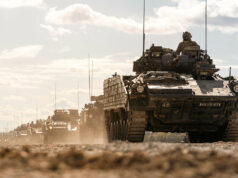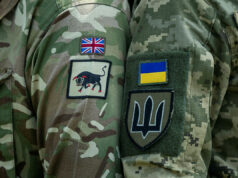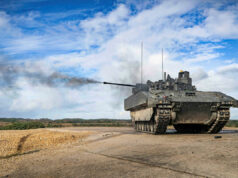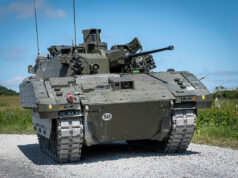New data from the Ministry of Defence confirms that the British Army is still training far fewer recruits than before the pandemic, with completion rates for Phase 2 training remaining well below pre-2020 levels.
The figures, released in response to a written parliamentary question from Will Stone MP and published on 10 November, show that total intake across all training establishments fell from 8,956 recruits in 2019/20 to 5,560 in 2022/23, a drop of roughly 38 percent.
Over the same period, the proportion of recruits who fail to reach Phase 2 has risen from about one in four to nearly one in three (around 31–32 percent).
| Training Establishment | 2018/19 | 2019/20 | 2020/21 | 2021/22 | 2022/23 |
|---|---|---|---|---|---|
| Total Untrained Intake | 5,859 | 8,956 | 8,679 | 6,584 | 5,560 |
| Army Foundation College Harrogate | 1,387 | 1,717 | 1,657 | 1,367 | 1,171 |
| Completed Phase 2 | 972 | 1,173 | 975 | 855 | 814 |
| Infantry Training Centre Catterick | 1,342 | 2,524 | 2,360 | 1,509 | 1,532 |
| Completed Phase 2 | 963 | 1,873 | 1,513 | 923 | 1,003 |
| Army Training Centre Pirbright | 2,424 | 3,332 | 3,469 | 2,491 | 2,075 |
| Completed Phase 2 | 1,960 | 2,753 | 2,598 | 1,832 | 1,530 |
| Army Training Regiment Winchester | 653 | 1,167 | 1,032 | 985 | 593 |
| Completed Phase 2 | 520 | 927 | 757 | 674 | 456 |
The Ministry of Defence said the data reflects the status of recruits as of 1 July 2025 and includes those who may still be completing training. However, the two-year window for the 2022/23 cohort suggests most outcomes are now settled. The figures show that the disruption of 2020–21 has given way to a broader structural decline. Army intake remains roughly 40 percent below its 2019–20 peak, and attrition through training has stabilised near 31 percent, compared with around 25 percent before COVID-19.
The data suggests that the service is training fewer recruits and losing a greater share of them before they complete Phase 2. Junior entry routes, such as the Army Foundation College Harrogate, have proved the most resilient, while Infantry entry at Catterick continues to record the lowest completion rates. Overall, the post-pandemic recovery has not restored the training and recruitment pipeline to its previous strength. The figures point to an enduring shortfall in both recruitment and retention within the Regular Army’s training system.
Wider picture
Across the Armed Forces, recruitment pressures have persisted for several years. Parliamentary data published in November 2024 showed that every service fell short of its recruitment targets between 2019 and 2024, with 2023–24 marking the steepest gap. The Royal Navy achieved around 60 percent of its target, the Army about 63 percent, and the RAF roughly 70 percent. Each branch faced distinct challenges: the Navy cited personnel turnover and retention issues, the Army was still restructuring under the Future Soldier plan, and the RAF struggled with economic factors and reduced applicant pools.
In response, ministers pledged a renewed focus on recruitment and readiness, with reforms to streamline entry processes and modernise force structures. The Ministry of Defence has since said these measures will take time to show results, but the figures underline how deeply recruitment challenges have affected the UK’s military strength over the past half decade.
Ongoing developments
These figures reflect outcomes up to 1 July 2025, covering recruits who began training between 2018/19 and 2022/23. Officials may argue that more recent intakes or reforms could improve future results, but the data currently available stops at that point. In July 2025, Defence Minister Lord Coaker told the House of Lords that recruitment reforms had begun to show results, with “inflow up 19 percent and outflow down 7 percent” year on year. He said application numbers were rising across all services following system changes and faster medical checks.
However, ministers have also acknowledged that recruitment and staffing shortages are affecting a significant share of the Army’s programme portfolio. In October 2025, Defence Minister Luke Pollard said these “resource challenges” were impacting parts of the Army’s modernisation effort, as reported in the National Infrastructure and Service Transformation Authority’s 2024–25 Annual Report.
That report pointed to difficulties recruiting personnel with the necessary project management and technical experience, warning that such gaps continue to affect confidence in programme delivery. Recent data also show that for the 12 months to July 2025, the median time between application and entry for Regular recruits was 249 days.
While the Army is smaller than in previous years as part of the Future Soldier restructuring, that context does not fully explain the depth of the recruitment and training shortfall. The reduction in size was planned, but intake and completion rates have fallen faster than the force’s intended drawdown. The data instead points to an underlying challenge in sustaining a consistent flow of trained personnel rather than a simple reflection of a smaller overall Army. While the training data provides a clear view of outcomes to mid-2025, the full impact of ongoing reforms on recruitment and retention will only become apparent in future reporting periods.














Judging by the picture the recruits are getting shorter as well!!
I just don’t get it… Why people don’t want to serve in UK… In France, we have a comparable budget for the army, of course, we are sometimes short of recruitement objectives, but not by 30%. And the army is still expending, with reserve building up. So their must be something untrue. The government does maybe not want to expand the number of soldiers.
They dont. The governmenr think they can ger away with a small but hi tech military.
Elliot, the army needs to be able to cover a frontage in defence and outnumber the enemy 3 to 1 in the offence. Doesn’t matter how much tech the army has. Those numbers apply. Back in the day, we had a Corps of 3 or 4 divisions to defend 65km frontage in west Germany.
Generally during peacetime the army suffers in terms of recruitment
Posted on another thread. It’s got a lot to do with them out sourcing recruitment…. Apparently it takes ages to go through the security checks nowadays. People are only willing to sit around so long before they think “sod it, I’ll go work somewhere else”… Put recruitment back into the hands of the guys serving. They know how to sell it…they did for me!! But then stop wasting time and just give them a start date and carry on checks as they’re going through the first part of their training
I can only suggest my post later on. When I was seventeen in the cold war years one of my options was to join the RAF but I went elsewhere. Nowadays, I don’t know who I might even have to fight, particularly in an undersized,underfunded, under equipped army.
what was the reason the 2019/20 and 2020/21 bump? was it Covid related?
Judging by the picture the recruits are getting shorter as well!! The shortfall is not explained? How about this…. Potential recruits see a reduction in the size and capabilityof the army,; getting accepted takes a ridiculous length of time and if you have skills you can earn way more in the private sector without having to commit to a time to serve. If the writer of the report had a brain cell he/she/it would know that.
Not to mention it takes so long to be recruited and the very real prospect of being prosecuted 30 years down the line.
Unfortunately in line with the comments above the publicity regarding the illegal discrimination against white men in the RAF is hardly a positive advert to attract the one group who will and always be the largest group within our military namely young white men. A perfect storm of negativity for recruitment but good news for the mandarins in the Treasury.
Not an appetising picture from HMG for young folks is it. Sign up, we’ll refuse to pay for the kit you need, we’ll give you terrible pay, almost no benefits relative to yesteryear, awful accommodation and nothing to do all day. In return you may get to risk your life for a government that doesn’t give a toss about you and when you get home you’ll see your street is unrecognisable because of the million plus foreigners that come here each and every year.
If the government doesn’t care I don’t see why kids would be expected to
HEY NOW! ENOUGH OF THAT!
I mean I agree with you, but you don’t just come out and say it. You may offend someone 🤨
As ex RN. Every word of that comment is garbage.
You may disagree, but other than the last comment about migrants the rest is spot on.
1. Kit is garbage
2. Pay is crap
3. Troops get abused by the govt (all other public services get overtime and have a union). Op Ilympics, lorry driver strikes, fire strikes to name a few
4. Most of the benefits we used to enjoy exist anymore. Allowances and expenses cut left and right.
5. Accommodation is horrendously bad, they won’t even put homeless in it as its below human rights standards
Which bit wasn’t true?! Also ex RN commenting on an Army issue isnt really giving you the credit you’d hoped!
I think something which is constantly missed, perhaps deliberately so, is that the country just is not worth fighting for anymore.
In 1914 and 1940 men were conscripted, but they were conscripted to serve a country which was unmistakeably theirs. We’re told the opposite is true these days, that is was never ours, and to suggest otherwise is dangerous, nativist, racist, supremacist etc.
In 2025, you can’t even be sure that your children will be safe at a dance class, or that your girlfriend or wife can wait for a bus, without someone who shouldn’t have even been here in the first place murdering them. Things are just completely out of control. This is before you even get to the state of public services, wages, mortgages etc.
No ending up in the work house when you fell on hard times though !!
Thanks for speaking up. Thank you for your service.
Nobody wants to fight Russia but the main issue is still the process.
18 months to join is too long. Should be 18 days
Neither of those explain the drop in people reaching Phase 2. A third of the people who make it to Catterick are dropping out.
Could be that the output standards are still robust but the standards for entering training have been lowered? One possible scenario.
Fitness of the recruit reflecting wider standards in society?
Hello mate,
I’d agree that the level of physical and may be mental fitness isn’t what is used to be. I don’t believe that young people today are somehow less than previous generations but I do think that the isolation that school kids went through during COVID has had an effect that we still don’t fully understand. Being in the military is one of the most social experiences a person can walk into – good and bad. Why? Because you depend on your mates to be able to do your job and they depend on you, and if the poop hits the fan – your life might be dependent on them as well.
If the kids coming through the recruitment process now lost out on learning social skills during their formative years they are going to be struggling. Some will catch up, some won’t. It might be that is what we are witnessing during the training program. If anything is going to expose issues it is military training.
Just a thought…
Cheers CR
Long Covid, Socialisation, Decling standards of fitness in the general population, the “yuth of today not being wut they were in my day.” we can all make hypotheses I guess, but there’s no data so *shrug*
Hi Dern,
Long COVID is a recognised syndrome and there is an estimated 1.9 million Brits affected. There are treatments but precisely what it is and how it affects people is not yet known and being researched. Also we know that many kids have struggled with mental health since COVID.
I know many find “mental health” to be a soft issue but for some it is very real sadly. I don’t have any answers, but we as a nation seem to be struggling to recover from COVID more than many other nations – which is weird to say the least. It is something we are very good at talking about – health in general – which might have something to do with traditional British stiff upper lip kind of thinking…
There is some data, but it seems it is incomplete. Sadly.
Cheers CR
What incentive is there for anyone to join the Royal Air Force? What incentive is there to join the Royal Navy? Whatever the incentives, there’s even less, to join the Army.
I should imagine the government, budget planners, accountants and bean counters are all happy now.
No one listens. No one has taken the armed forces single most important issue seriously for decades.
There’s never a positive story though to encourage a recruit! Numbers being cut, outdated kit, failed projects, serious questions about how capable the army now is, it’s all doom and gloom, not to mention the recent sex assault and resulting suicide, prior to that bullying was in the news. That’s not a backdrop that’s going to appeal to many people! The clowns in charge are reaping what they have sowed!
Sorry but this is not statistically relevant data it’s two short a sample with not enough sample points it’s impossible to say if all you are seeing is standard deviation. As for taking 2019/20 as a very high point and then 2022/23 as a low it does not work as it’s arbitrary and not a test of the data.. I could pick 2018/19 and 21/22 and say there was a massive increase…
If there’s a shortage of project managers with relevant expertise it’s because the CS doesn’t pay the market rate for such people- as they are not in short supply in the wider world. That aside, in general, most people want job security, reasonable career prospects and a stable family life. Unless the army can provide that it will become increasingly difficult to recruit anybody. There are employers in the City who make comparably onerous demands on their staff, and still manage to recruit a certain type of person, but they do so by offering them huge salaries that the army can’t compete with.
The government needs to research this thoroughly.
Those inside the service, why are they leaving?
Do a census with today’s youth and see where their minds are at, and why they do not want to join the armed forces.
What a totally common sense suggestion..! Find out what the issues are and then do something about them…
Unfortunately, we are talking about politics and the state – dogma rules, common sense walks. Sadly.
Cheers CR
Bringer, the issues causing service personnel to leave are very well known. The Continuous Attitude Survey (CAS) happens every year. Also service leavers who PVR are asked to state their reasons for leaving. The CAS is open source and can be googled.
So privatisation of recruitment is going well , but the company doing the recruiting will be well recompensed
Part of the issue is that the Army’s adverts are frankly crap and wouldn’t get anybody excited. The Navy’s “I was born in a shithole in the north and now I can fix an aircraft carrier” adverts and the Royal Marines “Become the harbinger of death” adverts are both far more appealing. The MoD as a whole has an image issue with being percieved as boring and sterile, which doesn’t make people want to join.
We revealed the Challenger 3 in an empty aircraft hanger with a bunch of people in hi vis. How do you make a tank boring? For all of the Russian military’s many, many failures, they do know how to make things look cool, and the first step to getting people to join is to make them interested. The US also does this better than we do.